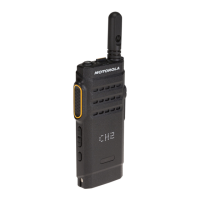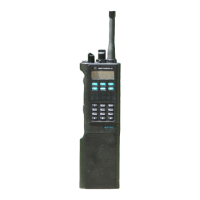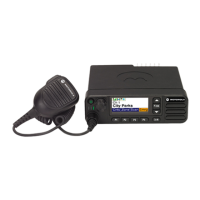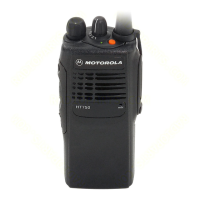During Emergency Operations, the radio automatically rejects phone, Private Automatic Branch
Exchange (PABX), and private calls, and does not monitor the talkgroups in the selected scan list.
However, if an Announcement Talkgroup (ATG) is the selected group, the radio monitors the sub-
groups associated with the ATG.
When entering Emergency Operation, any ongoing voice call is aborted or cleared down. Any packet
data transfer in progress is aborted. However, the session is kept open.
2.10.1
Emergency Group Call
The Emergency Group Call has the highest communication priority that means it is the pre-emptive
call. Emergency Group Call is available in both Trunked Mode Operation (TMO) and Direct Mode
Operation (DMO) modes.
During Emergency Operations, Emergency Group Call can be started by pressing PTT. The radio may
also support Hot Microphone operation, which allows the Emergency Call to be conducted without
pressing PTT. If a radio receives an incoming group call with emergency priority, the display shows
that an emergency call has been received, and a special audio alert is played.
The Emergency Group Call Termination feature allows the radio user to attempt terminating an
Emergency Group Call by pressing the Back touch icon. The ownership status of the radio determines
the following termination conditions:
Call Owner
The radio sends a disconnection PDU to the SwMI. The SwMI responds by sending a release PDU
response with an indication that the call has been disconnected.
Non-Call Owner
If a radio is programmed to terminate a call, the termination procedure is the same as for the call
owner in an Emergency Group Call. Otherwise, the radio leaves the group call without informing the
SwMI.
The SwMI may reject the termination request, in which case the radio stays in the group call.
An emergency group call can be configured as non-tactical or tactical:
• A non-tactical call is initiated on a talkgroup designated by the codeplug setting. When in non-
tactical emergency mode, you cannot switch talkgroups.
• A tactical call is initiated on the currently selected talkgroup.
In TMO, if the radio enters emergency operations while the emergency broadcast call is active the
radio continues on the call without initiating any calls and sends an emergency alarm.
2.10.2
Non-Tactical Emergency
In Non-Tactical Emergency, the radio switches to a designated Emergency talkgroup when starting
Emergency Operations. This talkgroup is used for the complete duration of the Emergency Operations
and changing talkgroup is not allowed.
In Trunked Mode Operation (TMO), it is possible to configure the radio to make Emergency Non-
Tactical Group Calls without sending attachment. If set, the radio assumes implicit attachment after
receiving a temporary address.
In Direct Mode Operation (DMO), the Non-Tactical Emergency proceeds on the same frequency as the
previously selected talkgroup. The service provider can designate any Individual TETRA Subscriber
Identity (ITSI) address to be used for Emergency Operations and this ITSI can be an Open Group -
broadcast address.
After exiting from Non-Tactical Emergency, the radio goes back to the previously selected talkgroup.
MN002955A01-AA
Chapter 2: Services and Features
32 Send Feedback
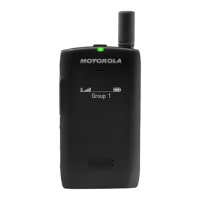
